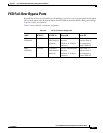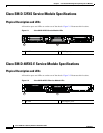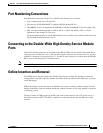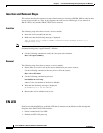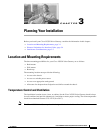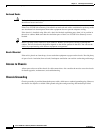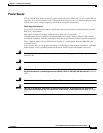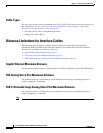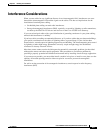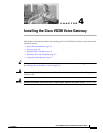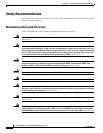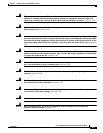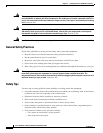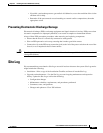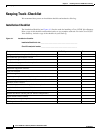
3-5
Cisco VG350 Voice Gateway Hardware Installation Guide
OL-25970-01
Chapter 3 Planning Your Installation
Interference Considerations
Interference Considerations
When you run cables for any significant distance in an electromagnetic field, interference can occur
between the electromagnetic field and the signals on the cables. This has two implications for the
installation of terminal plant cabling:
• Unshielded plant cabling can emit radio interference.
• Strong electromagnetic interference (EMI), especially as caused by lightning or radio transmitters,
can destroy the EIA/TIA-232 drivers and receivers in the Cisco VG350 Voice Gateway.
If you use twisted-pair cables with a good distribution of grounding conductors in your plant cabling,
emitted radio interference is unlikely.
If you have cables exceeding recommended distances, or if you have cables that pass between buildings,
give special consideration to the effect of lightning strikes or ground loops. If your site has these
characteristics, consult experts in lightning suppression and shielding. The electromagnetic pulse caused
by lightning or other high-energy phenomena can easily couple enough energy into unshielded
conductors to destroy electronic devices.
Most data centers cannot resolve the infrequent, but potentially catastrophic problems just described
without pulse meters and other special equipment. Take precautions to avoid these problems by
providing a properly grounded and shielded environment and by installing electrical surge suppression.
If you remove any module, you must either install a module in its place or install a cover plate over the
opening. All module openings must be either occupied or covered to prevent electromagnetic
interference.
For advice on the prevention of electromagnetic interference, consult experts in radio-frequency
interference (RFI).



